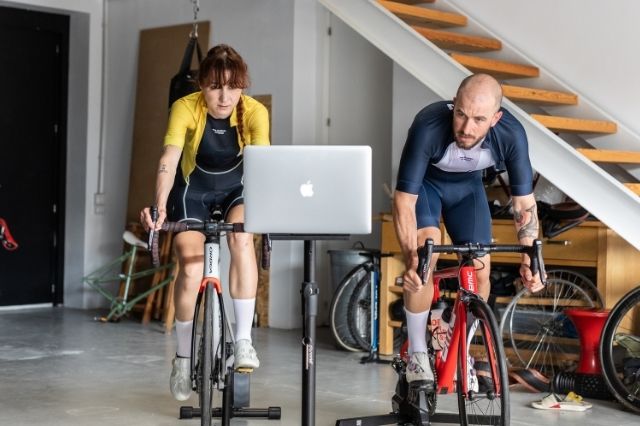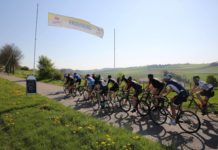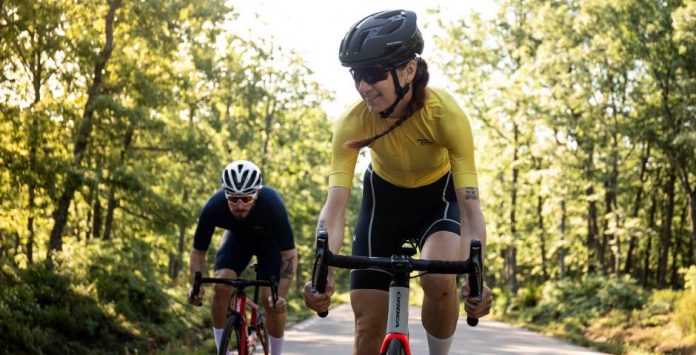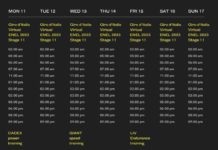How much do you know about refreshments? Let’s see how you can improve your intakes during the race.
Let’s start off with a bang. Here are the most important factors to consider:
Digestive system capacity
Can you imagine coming from a months-long hiatus and wanting to reach your peak performance that same week? If only it were that easy.
With your digestive system the situation is similar. It takes time and training to handle high amounts of carbohydrate during exercise without discomfort.
The first step is to start with a fully tolerable load and work your way up from there.
Here are some possible strategies you can employ to train your digestive system:
- Perform runs with high volumes of fluid in the stomach or immediately after eating.
- Increasing the total carbohydrate content of the diet.
- Progressive increases in the amounts of carbohydrates consumed during the race.
And these are the improvements you can make:
- Decreased gastrointestinal problems during the race.
- Tolerate greater amounts of volume in the stomach.
- Improved performance due to increased energy capacity.
What about sodium?
Electrolytes, the forgotten ones. Of course, we lose water through sweat when we exercise, but we also lose electrolytes such as sodium. If we don’t replenish the sodium we lose over the long run, we will see our stress, confusion, disorientation and, in short, we will see our performance decrease.
Sodium can be replenished during exercise through isotonic drinks or salt tablets, although it can also be present in other forms of food supplies.
With sodium there are no excuses, as by simply using salt we can replenish our sodium needs. 1g of salt contains 0.4g of sodium.
With or without caffeine?
Caffeine is an interesting strategy for those moments when fatigue starts to set in because it can reduce fatigue and therefore increase your athletic performance. But be careful! This effect is temporary. Using caffeine at the start of a long run could lead to a greater feeling of tiredness at the end of the race if you do not continue to ingest it properly throughout the race.
In addition, it is important to be aware of the flip side. Excessive use of caffeine could lead to tolerating high doses without achieving the desired effect.
In short, it is important to control the dosage and number of caffeine intakes you take for the race.
There are different ways of consuming caffeine. Through gels, tablets, drinks or infusions.
Types of refreshments
Every cyclist has different tastes and tolerances for different formats. Below you will see different types of refreshments that you can consume depending on their texture:
- Liquids: These are the easiest to ingest and absorb, but the ones that take up the most volume in the race. You can prepare your own flask with the quantities of water, electrolytes and carbohydrates you need.
- Semi-solids / semi-liquids: here we would find the gels, which are easy to ingest and carry on the bike. A negative point is that you will have to adjust to the quantities of the product/brand you buy.
- Solids: here we find from homemade bars to commercial bars, whole or dehydrated fruits and jelly beans. They are usually preferred by cyclists in the final stages of the race because of the stimulation of chewing them and the mix of flavours.
Most refreshments can be bought, as there are many commercial options, but we can also choose to prepare our own refreshments at home. In particular, we are going to focus on homemade energy bars.
Energy bars are easy to carry and, unlike gels and isotonic drinks, they have a slower and more gradual assimilation, which can be interesting for certain moments.
Bars usually have as a base ingredient a food rich in carbohydrates, such as oats or rice, but we can add many other ingredients. It will be the combination of ingredients and the adjustment of quantities that will allow us to achieve the texture, flavour and nutritional composition we want. And that’s the trick, to understand our needs before we start preparing a bar.
Now, let’s get going with two recipes for homemade bars for cyclists:
- Rice cake bar, as a refreshment bar. Rice cakes are on the lips of all cyclists these days, as they provide quick and easy energy while we are on the bike. They are ideal for when we want to train the digestive system with solid food, especially at the beginning, when we are not used to a lot of training volume. In this link you can see the recipe in detail.
- Recovery bar, as a post-workout. After training, it’s time for recovery, so here is the complete recipe for a bar that will help you recover after a demanding workout. Why is this bar a recovery bar?
Because it contains complex carbohydrates, quality proteins and antioxidants which will help to replenish glycogen stores and regenerate muscle tissue. Of course, it is very important to measure the quantities of each ingredient carefully, because depending on the quantities we use, we will be prioritising one macronutrient or another, and the nutritional contribution of the recipe will change.
If you are looking for a plan designed just for you, you are in the right place. Discover INDYA’s technology platform with online nutritionist and you can continue to improve your cycling performance with truly personalised nutrition.
Plus, we’re bringing you a unique offer to get your first month of personalised nutrition planning at 50% off, including a sports nutritionist and tracking app. What are you waiting for?
At BKOOL we will continue working to make the simulation more and more real. Try it FREE for 30 days!













